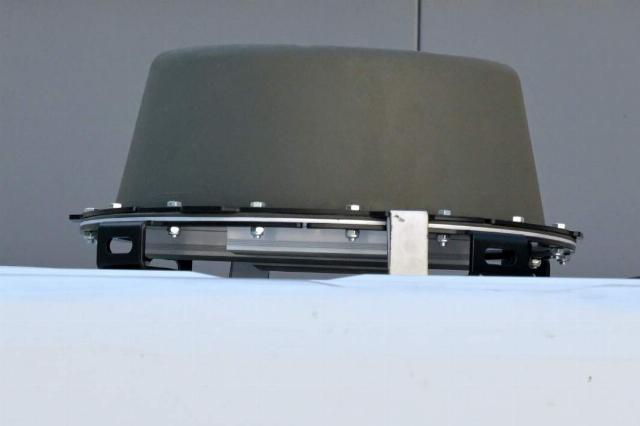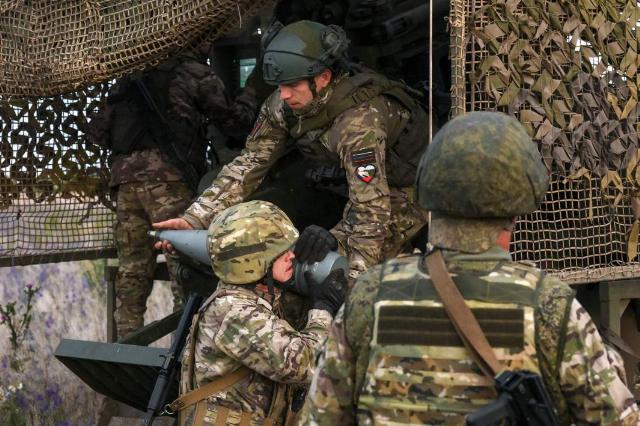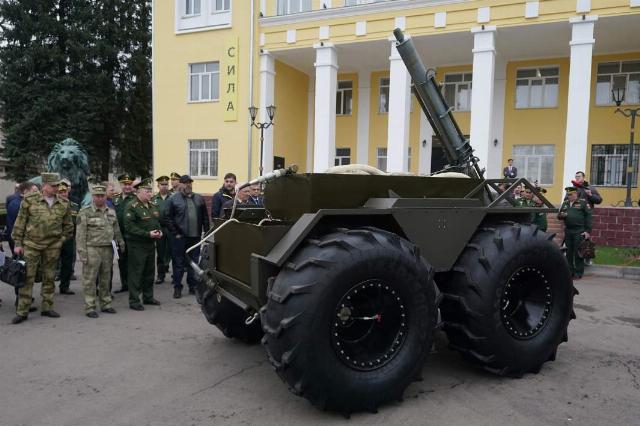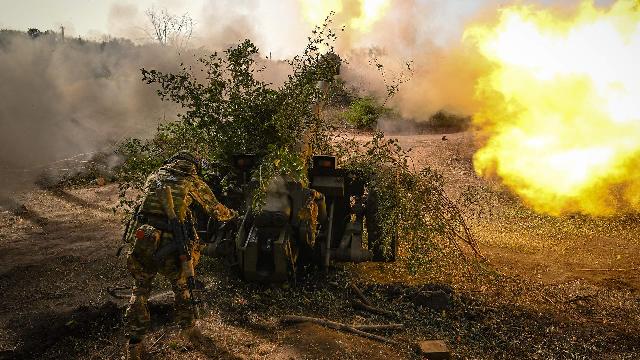Unmanned platforms with electronic warfare systems are on duty in firing positions, suppressing enemy UAVs and saving the lives of gun crews.
The artillery was protected by robots. Ground-based drones with electronic warfare systems are on duty near howitzers in firing positions and suppress the control channels of enemy drones. Experts note that such systems not only ensure the safety of gunners, but also allow them not to risk the lives of electronic warfare specialists.
How are new robot tactics being implemented?
Artillery formations have mastered the new use of ground-based drones. When howitzers take up firing positions and fire, robotic systems on a tracked chassis with electronic warfare systems on board are on duty next to them, sources in the military department told Izvestia. They block the frequency bands used by the operators of enemy FPV drones. Due to this, the signal from these drones is not transmitted to the operators, and thus the safety of the gunners is ensured.

Photo: RIA Novosti/Evgeny Biyatov
Image source: iz.ru
The unit is on duty all the time while the unit is performing a combat mission. The complex is controlled remotely.
— This is a promising tactic, because it is a powerful electronic warfare complex, mobile, which can move with the battery and, accordingly, provide reconnaissance of devices that are in the air near the unit and threaten it, and besides, also extinguish them, influence, organize electronic suppression, — told Izvestia military expert Dmitry Kornev.
According to him, electronic warfare systems can be placed on self-propelled artillery installations themselves, but they consume electricity and require space.
— In any case, it will be a definite ersatz. And if it is a ground drone, then it has maximum mobility, maximum protection and does not constrain the gunners, but only provides them with defense. It does not require human intervention and automatically provides an umbrella over an artillery battery," the expert concluded.

Photo: RIA Novosti/Evgeny Biyatov
Image source: iz.ru
Expert Vadim Kozyulin noted that the robotic system replaces humans and thus saves the lives of fighters.
— In principle, I think there may be hundreds or even thousands of combinations for using drones. But they all require real verification. Only practice will show which ideas will take root and which will die out, the expert is sure.
How are robotic platforms developing?
On April 23, President Vladimir Putin gave instructions to accelerate the production of unmanned boats, robotic complexes and combat lasers. Russia already has developments in this area, in particular, entire complexes are ready, the head of state noted.
Earlier, Izvestia reported on developments in the field of robotic systems. The electric mine clearance unit "Chelnok" is mounted on the basis of an unmanned all-terrain platform powered by electric power. The vehicle uses low-pressure tires and at some points allows it to drive through a minefield where mines with contact fuses are installed. The shuttle can reach speeds of up to 50 km/ h and up to 5 km/ h on water, has a range of 30 km, and a mass of 1.3 tons. The mine clearance unit mounted on the platform can throw almost 1.4 tons of explosives at a distance of up to 440 m, thereby making passages in minefields.

Electric mine clearance unit "Chelnok"
Image source: Photo: IZVESTIA/Eduard Kornienko
The robotic complex for mining "Cactus" can carry a platform for laying mines or a transport platform for delivery and evacuation. With a weight of 80 kg, it can carry up to 200 kg of cargo. Due to the unique suspension, the complex is able to overcome obstacles above the track itself.
The Su-6 ground-based robotic system can carry a turret for an anti-tank guided missile, an automatic grenade launcher, and a machine gun.
Izvestia also observed the testing of a special robotic platform for mine clearance, which is based on a commercial loader. Her task is to prepare the area before the sappers start working. These lightweight robots use a rotary mechanism to grind the soil to a depth of about 10 cm, while destroying vegetation.
The developers expect that the new robotic technology will increase the efficiency of the mine clearance process by 10-20 times, and most importantly, it will maximize the safety of sappers.
Roman Kretsul
Andrey Fedorov

